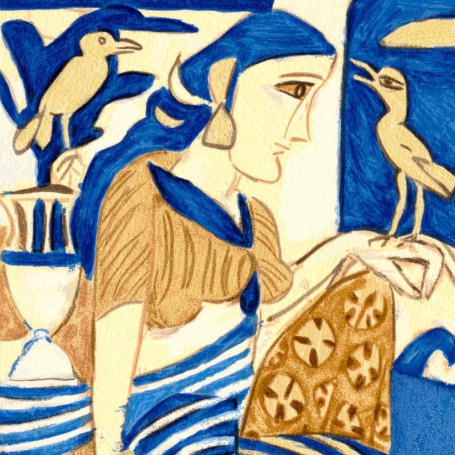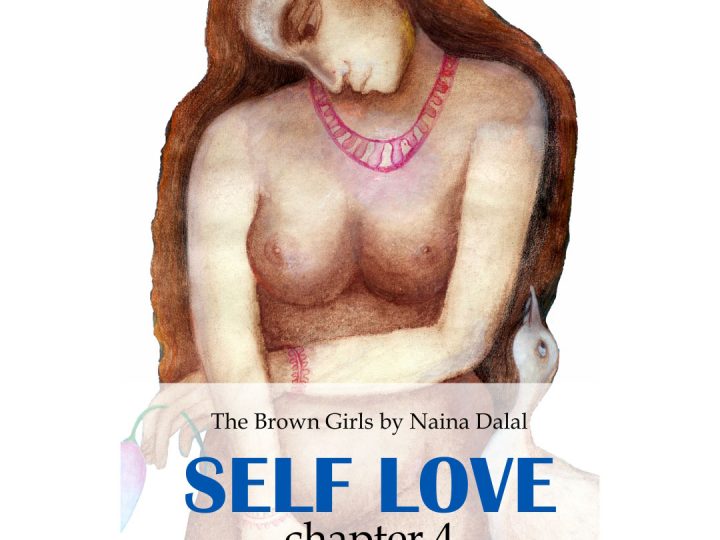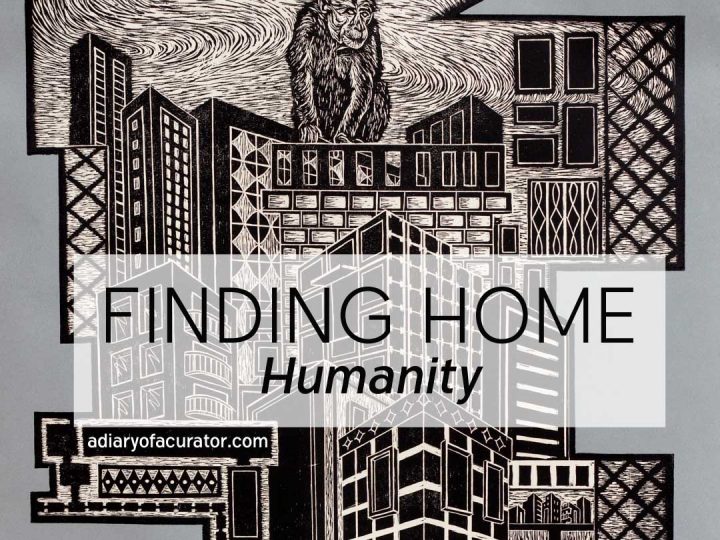Rāga
राग – રાગ – রাগ

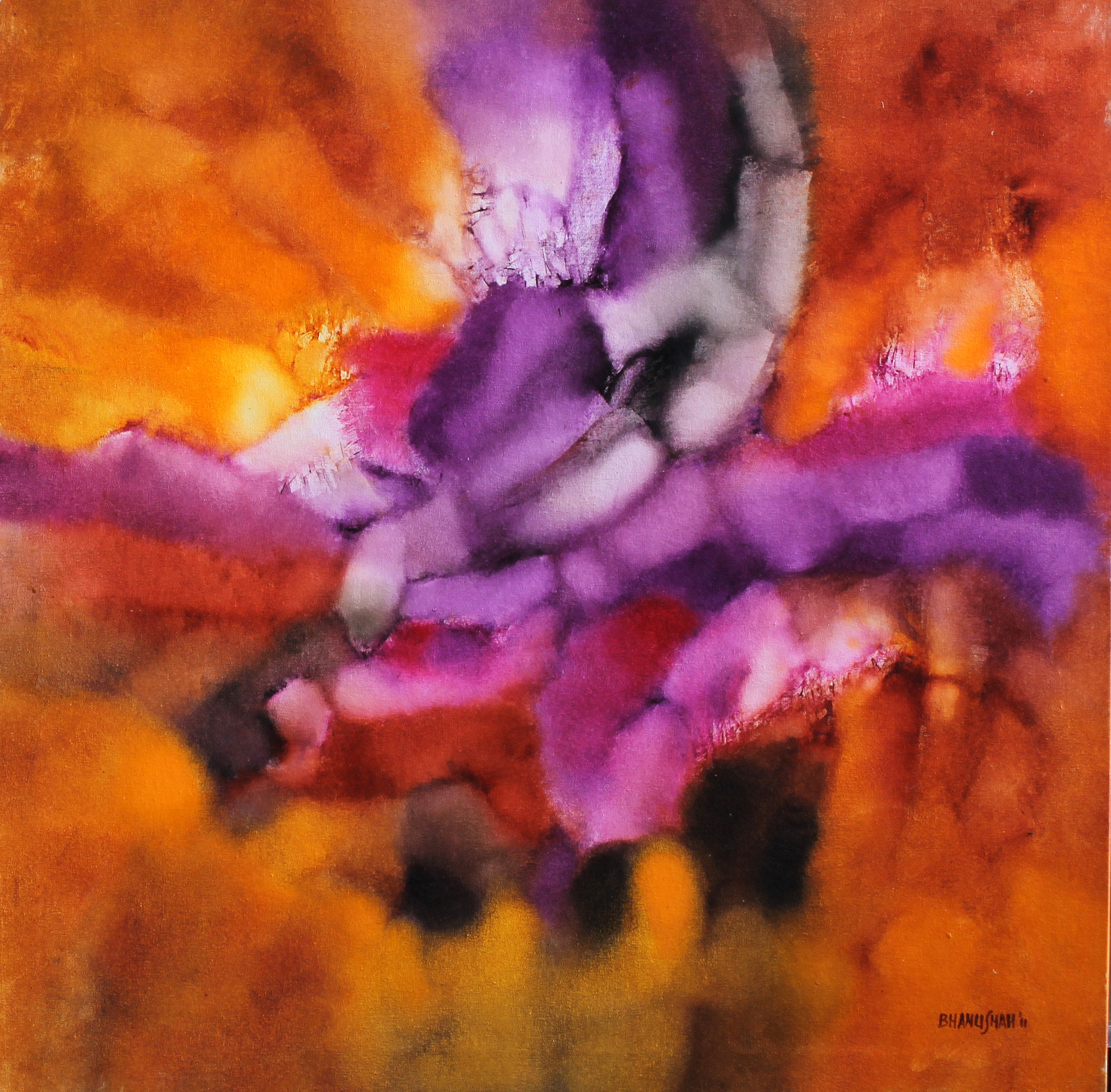
When you look at such art, it is natural to wonder why anyone would bother to create such abstract paintings in the first place. What could the artist possibly have in mind?
Being brought up in London and visiting India for the first time I feel my first encounter of Indian life is as diverse as abstract art. There are many reasons for me to feel closely connected to Bhanu Shah’s work in terms of his Indian colours and natural beauty. When meeting Shah and discussing his works, I felt a lot of movement in his poetic words which echoed in his paintings, thus the word Rāga felt truly connected to Bhanu Shah’s work in reference to colour, harmony, beauty and melody. I feel the title Rāga reflects naturally in the performance of his natural colours. When I observed his works closely; I imagined a series of rhythmic hand motions. Even though, the dividing lines between the colours and forms are necessarily becoming lighter in present times, the high frequency of sound still creates strong textured strokes within his paintings. His work is emotional and analytical and fantastical, individual and universal.
Bhanu Shah, a contemporary abstract painter from Ahmedabad, is equally at home with the abstract and the absolute, the emotion and the intellect.
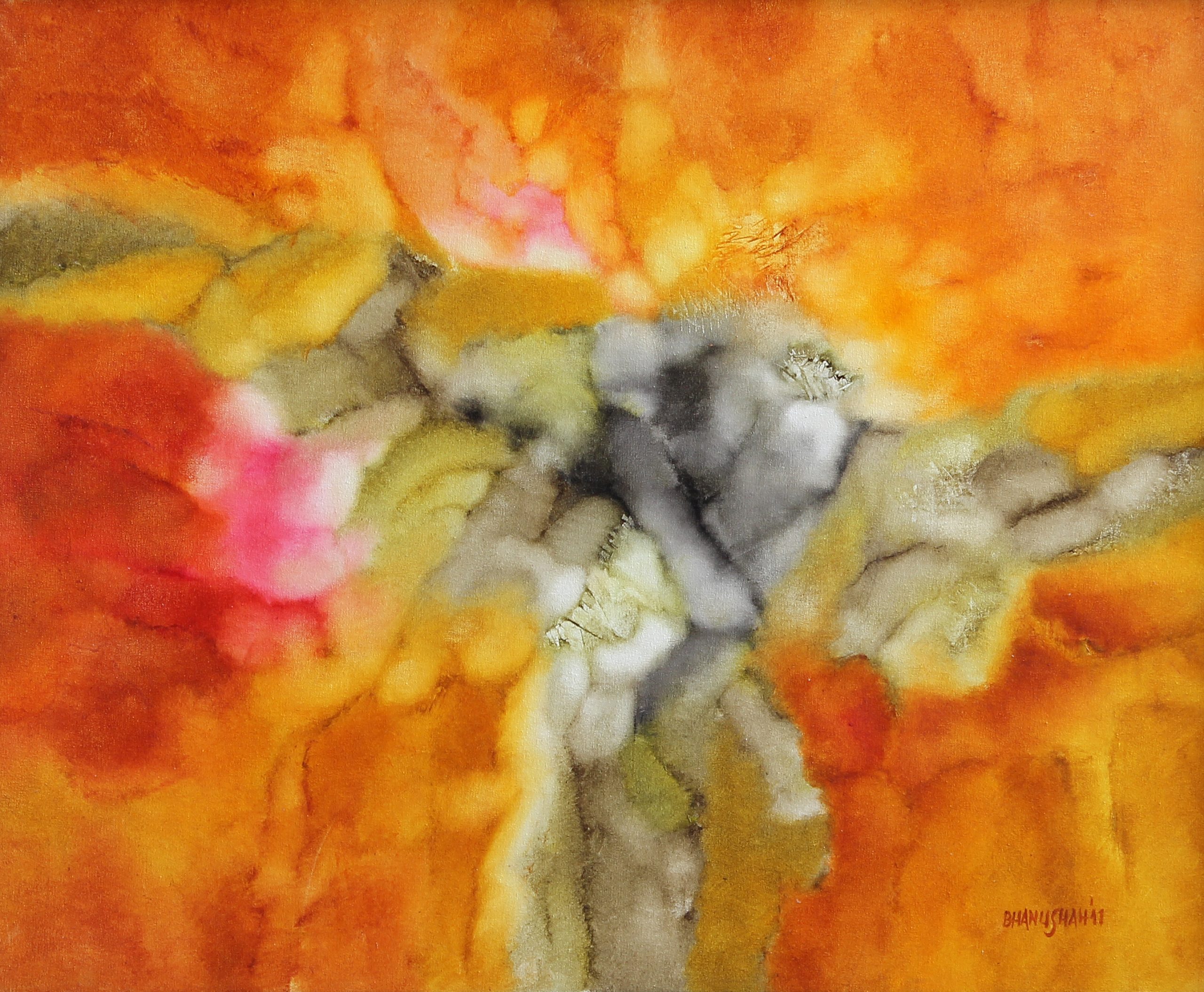
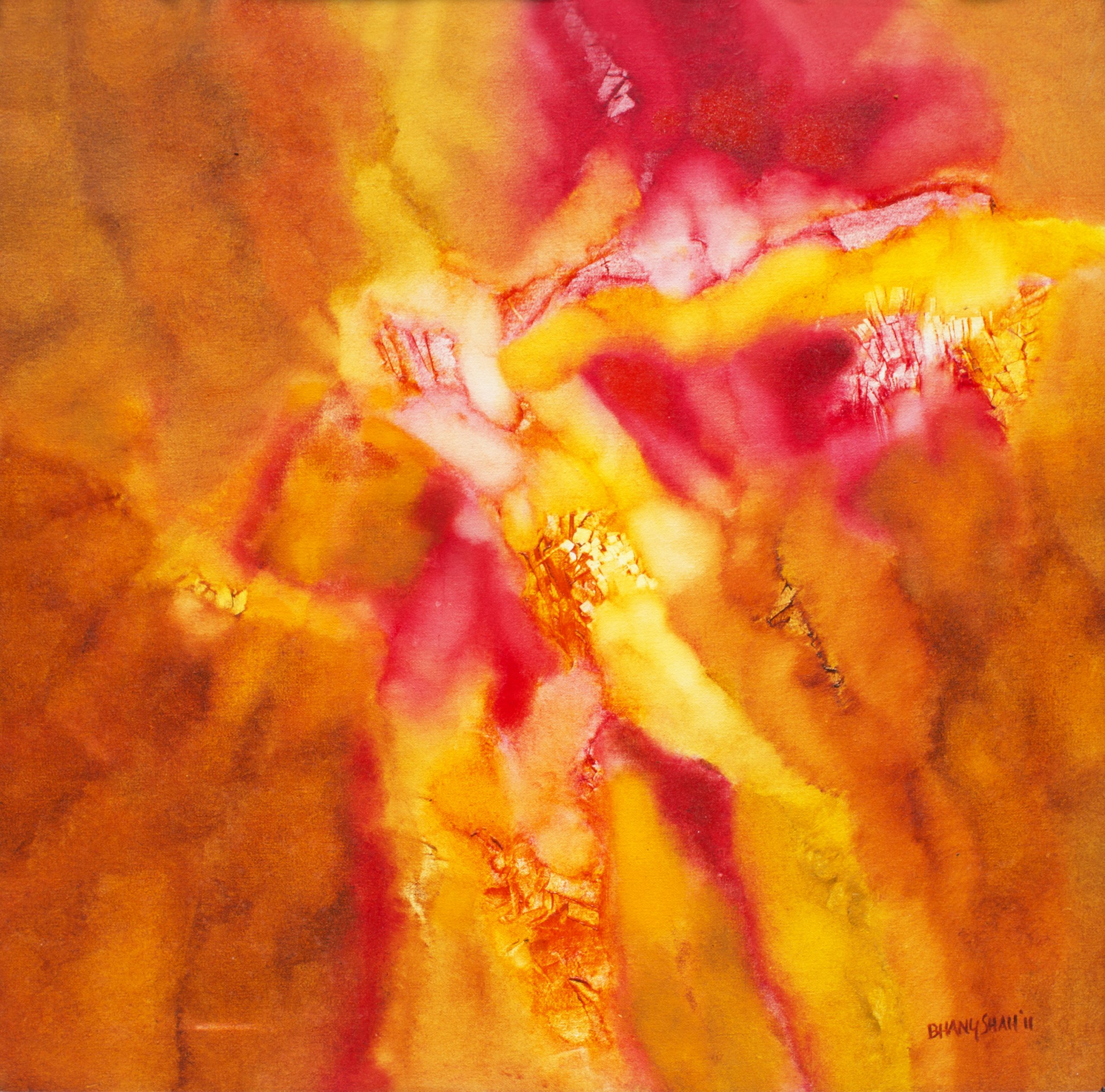
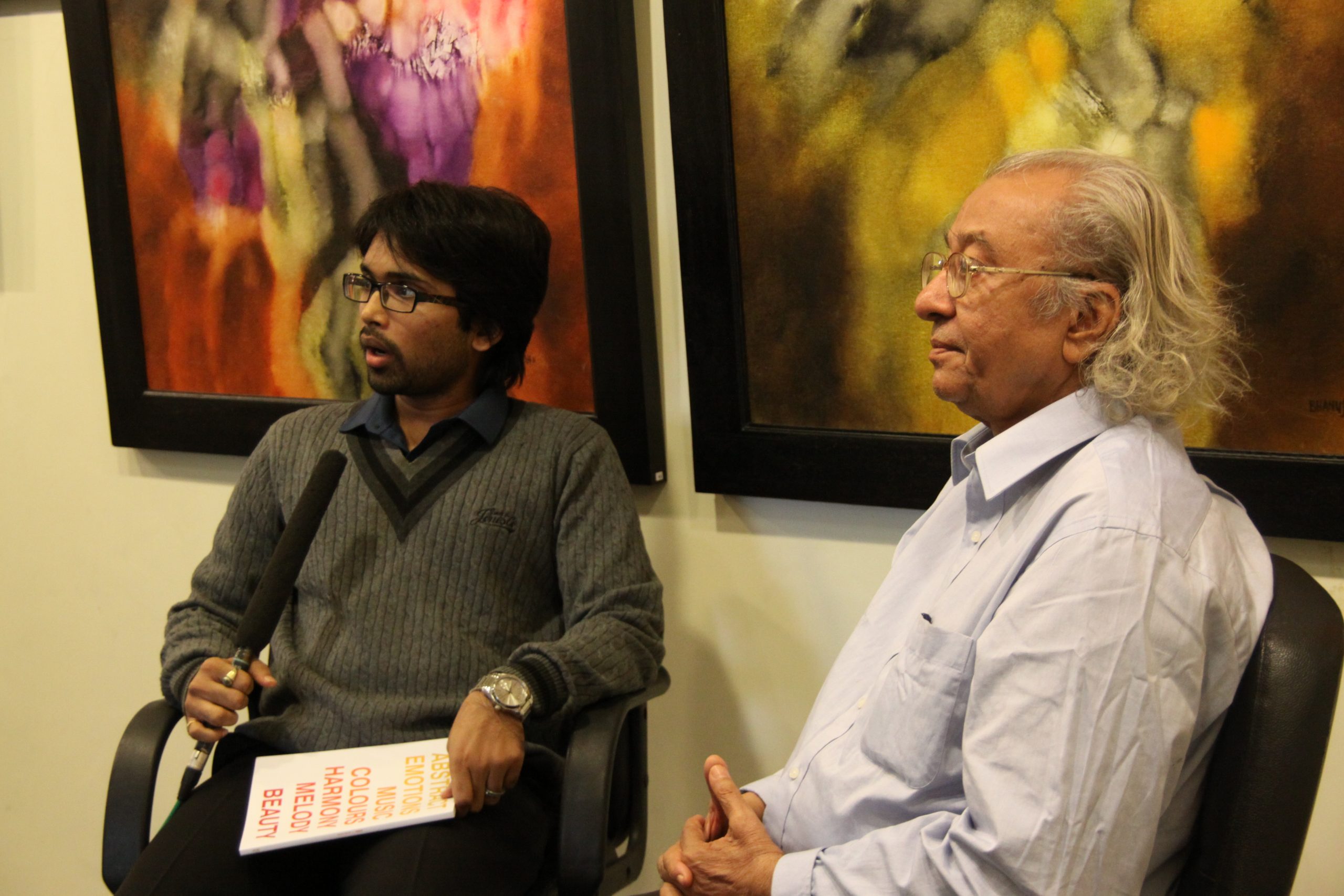
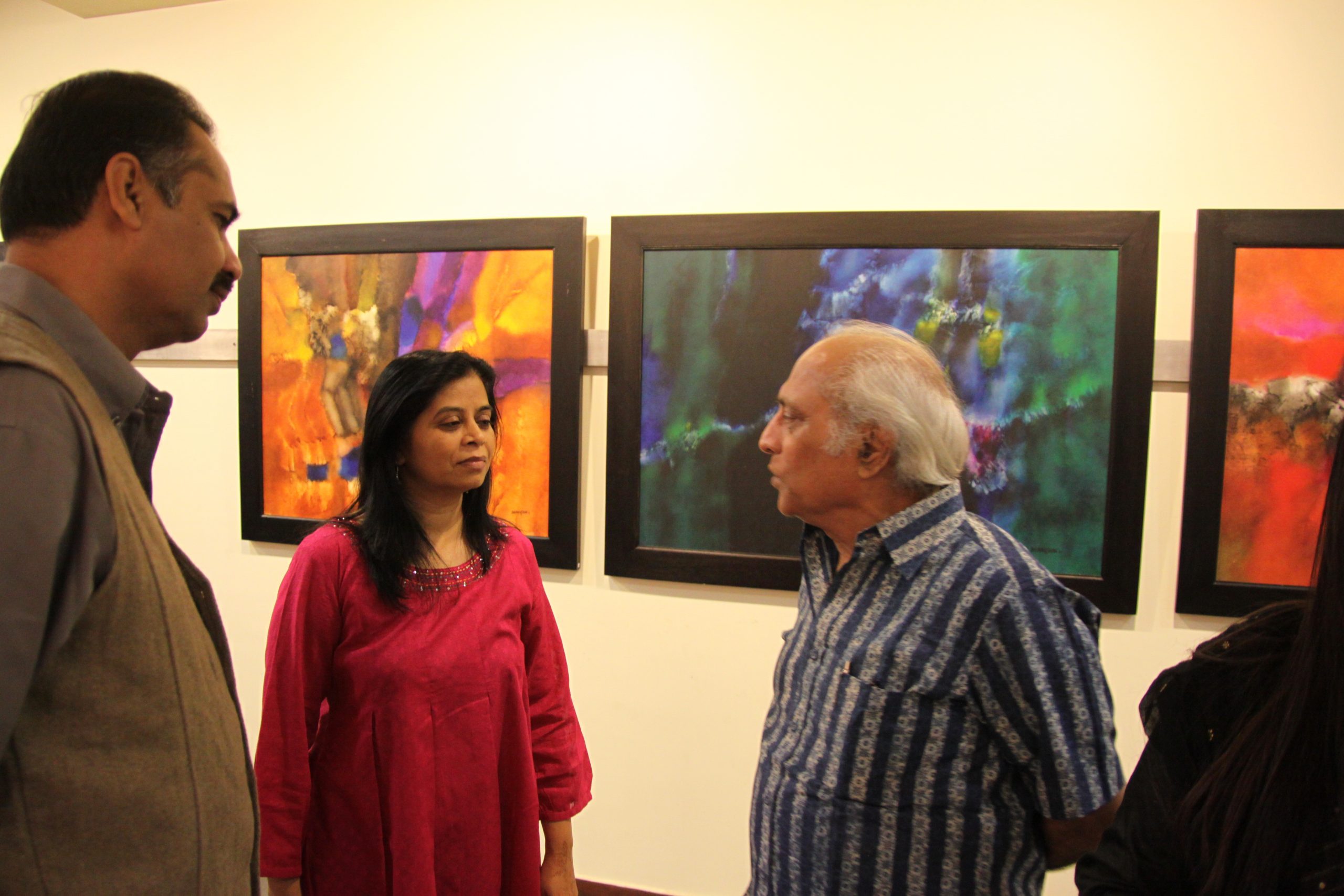
The most persistent association of colour and music has been the effort to correlate discrete hues with specific tones. Some of the possible connections between the elements of colour (hue and saturation) and those of sound (pitch and amplitude), the most often proposed mapping of tone to hue has been experimented within his Raga series.
Shah adores classical Indian music in the original form and is imaginative and pragmatic towards his working methods. He states, “I find that Indian classical music is very abstract and my paintings are also abstract, the music has the abstract quality of tones and my paintings have an abstraction of colours, therefore I listen more on the freedom of the movement and the tonal value of waves in a musical piece.” After speaking to him I feel music is a tool for expressing emotions and Shah has mastered this skill in a working manner. The composition of Shah’s process is like Indian classical music, elaborative and expressive. It is not orchestrated, and is not written down. While the framework imposes great discipline, within the area Shah brings his mastermind into full play. He engages the natural rhythm of the rāga’s and tala’s within his work. He explores the tonal qualities within the rhythm of the music and then applies colour onto the white canvas in front of him. He emphasises, “The piece of music is playing in the background, as far as my visual interpretation is concerned there is a big white canvas in front of me and I don’t know what to do…where to go…” Despite the fact, his work is seen as visual art, as it becomes more abstract it becomes more like Rāga: an art form that uses the abstract elements of sound and divisions of time. For instance, Wassily Kandinsky, himself a musician, was inspired by the possibility of marks and associative colour resounding in the soul. Equally, Charles Baudelaire had put the idea forward, that all our senses respond to various stimuli but the senses are connected at a deeper aesthetic level. Closely related to this, is the idea that Shah’s art has the pure dimension and can transcend ‘every-day’ experience, reaching a sacred plane.
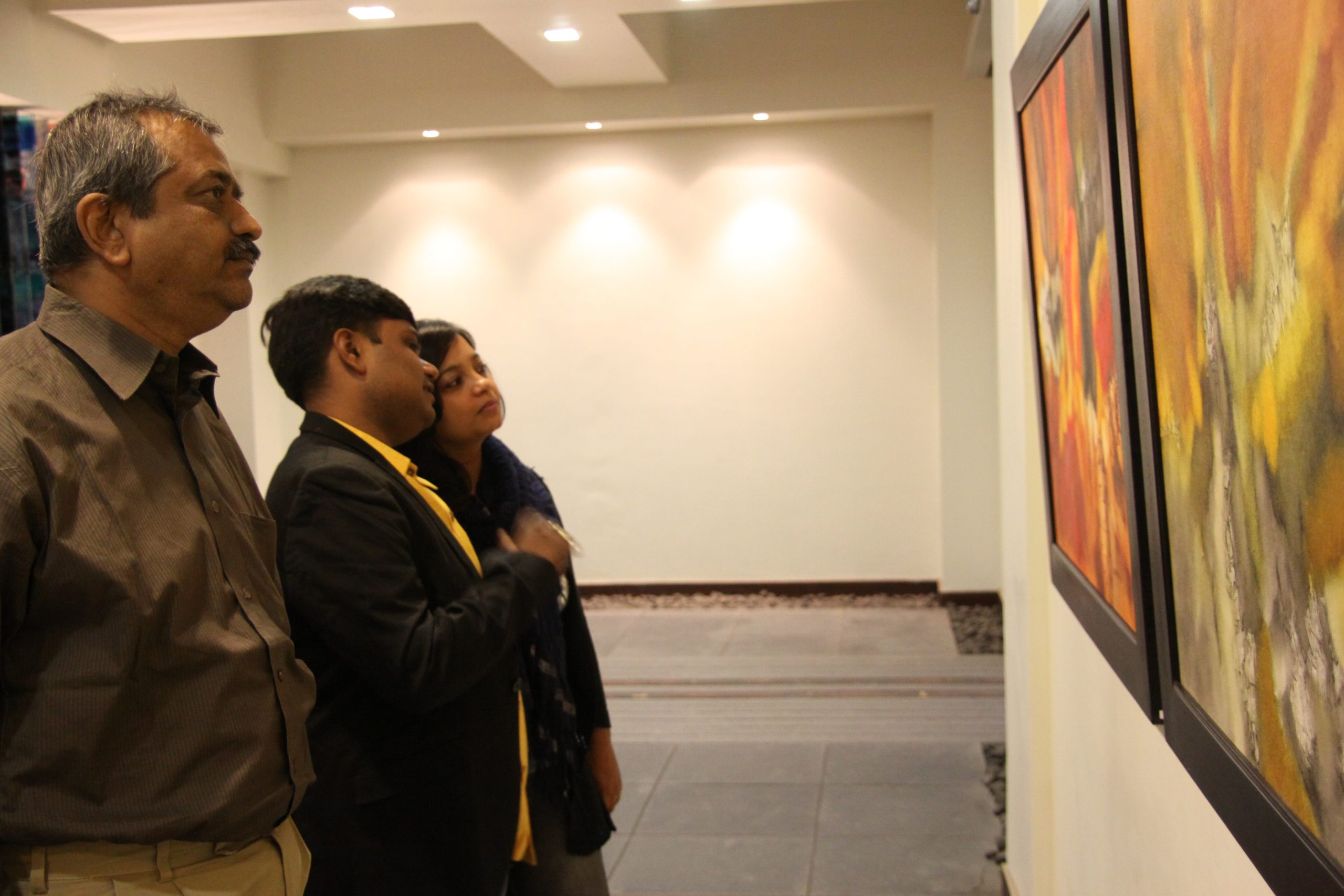

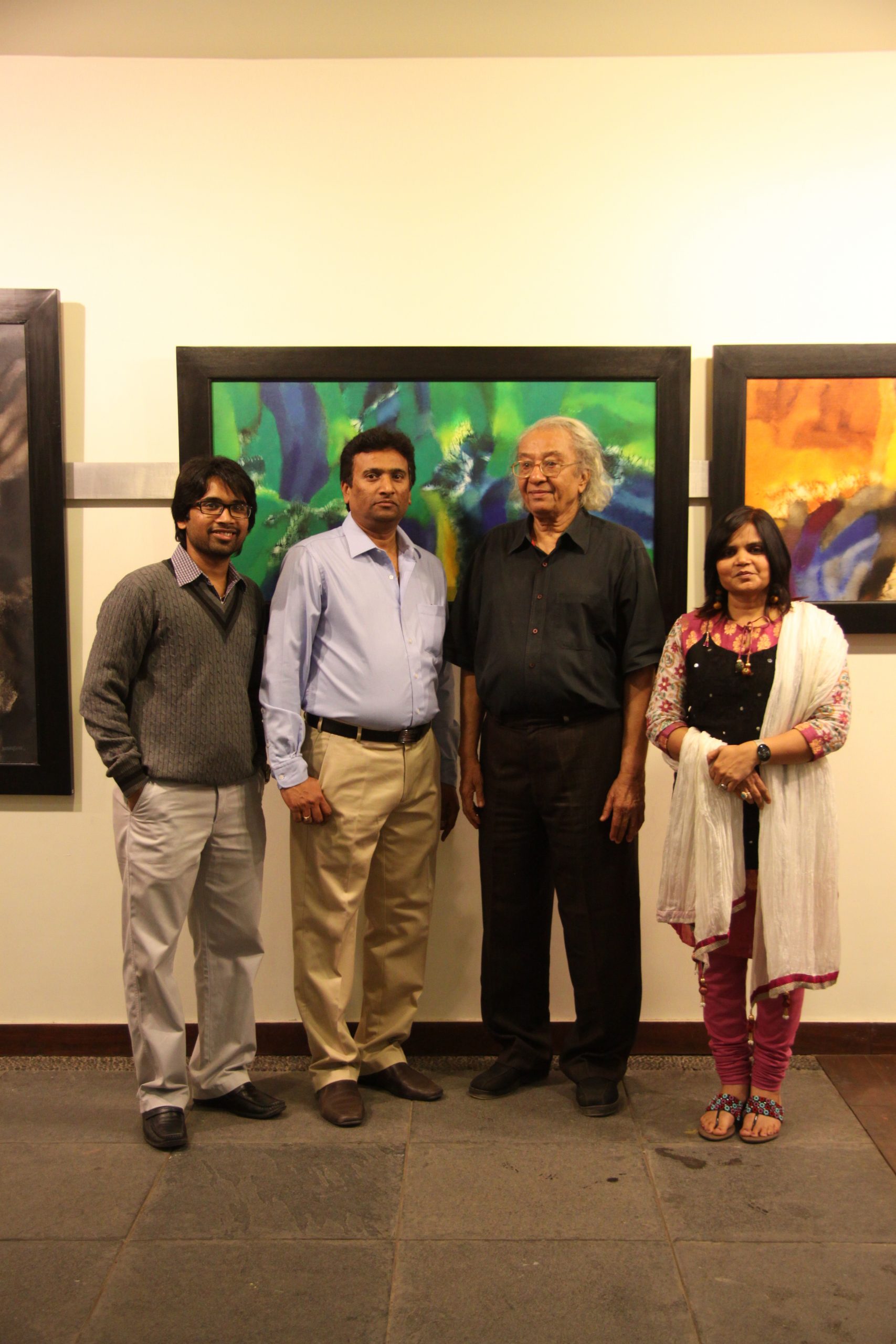

I am captivated by the delicacy of his colours, it is like I could almost feel the opaque and semi transparency of his colours emerging into the canvas itself. The three-dimensional rhythmic tone created by Shah is beautiful; it is as if the natural essence of colours is moving on the canvas. Similarly, he is teasing the colours, as if he is playing hide and seek with them, this gives me an emotional feeling that the colours are naturally weaved into one another, almost as an illusion that they are dancing in a single melody line.
Being the master of colours, Shah has a very special relationship bonding with his colours, he lets the relationship develop naturally, and thus he is very open to the colour variation within his work and as a result balances the colours and tones in harmony. His aim is for colours to glow out from mysterious depths, and relate to the other forms in the painting, creating an ambiguous space full of mystery.
As an innovative painter, he captures the inherent mood of the forms and tones, playing with the vital elements of light and shade sensitively and yet boldly, creating a work of art ‘awash’ with spontaneity. Shah’s exuberance and his wide-eyed optimism reflect in his paintings. To create this, he uses no paintbrush as he believes when using a paintbrush it creates a boundary, so therefore, to allow more freedom and movement in the appearance of his colours he only uses a fine delicate cloth.
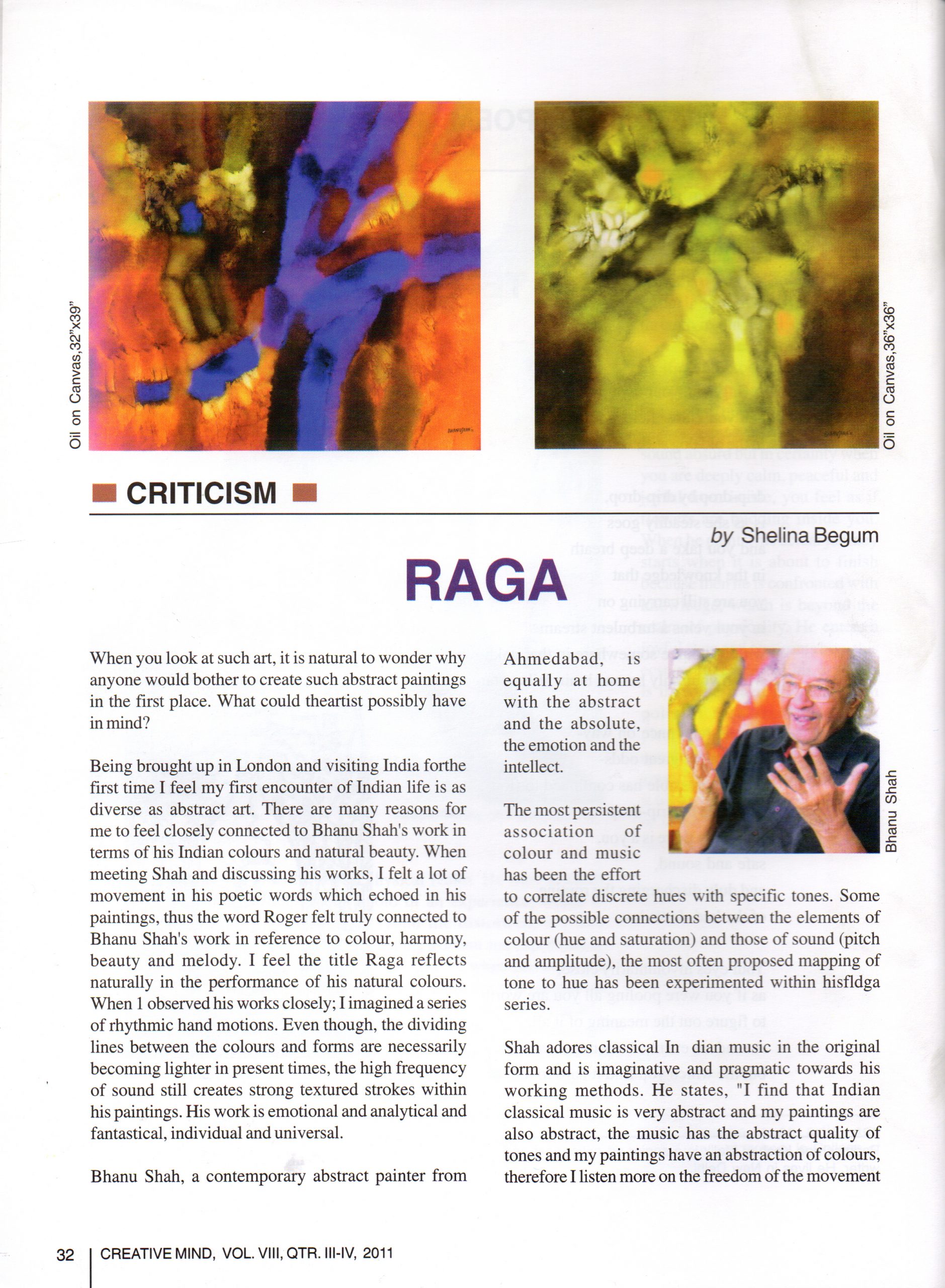
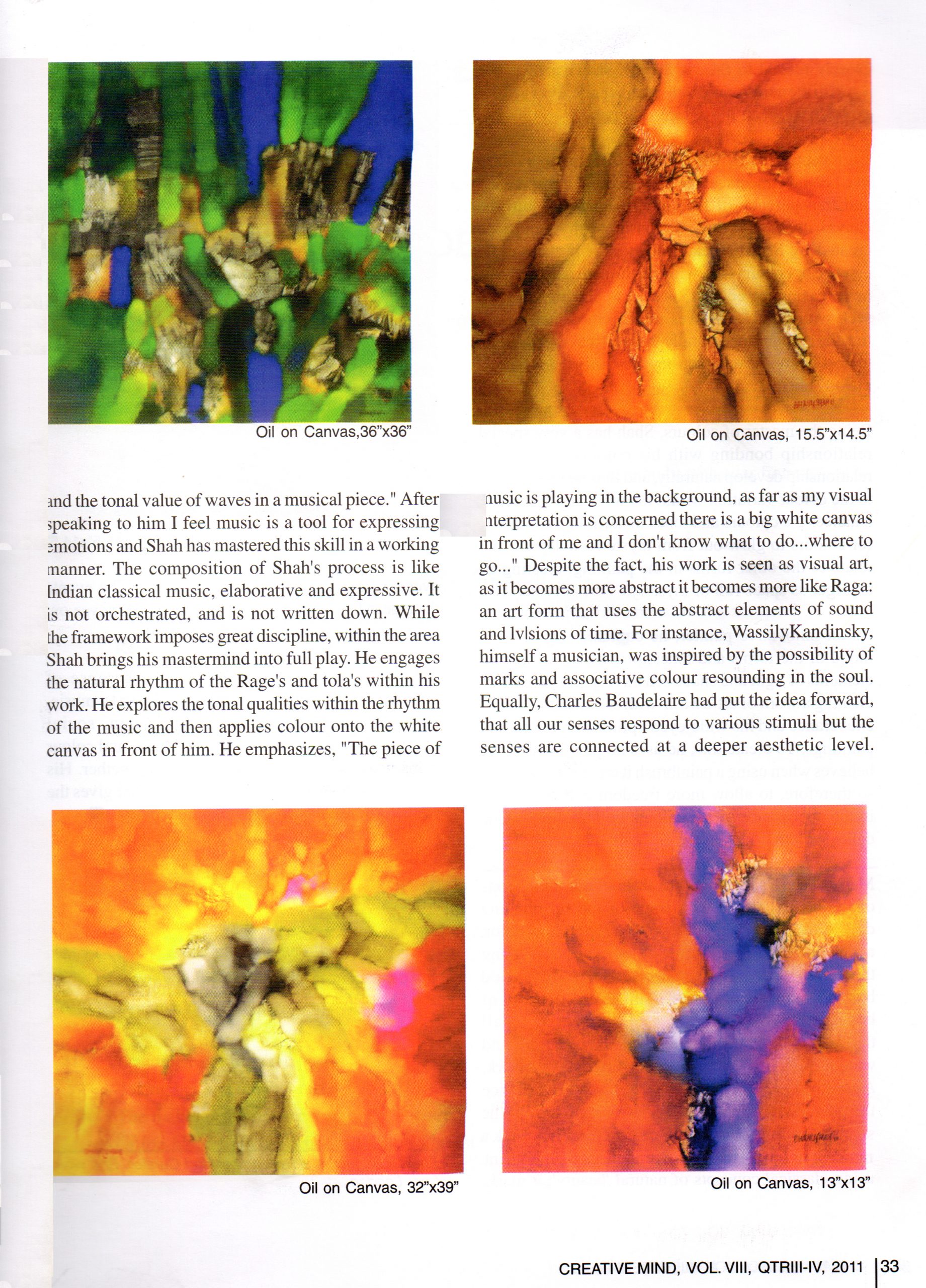
Many of Shah’s paintings are abstract representations of the natural world with some of the surrounding details simplified and abstracted through his colour, and natural impasto texturing of the canvas to capture the intense visual essence and feelings. He states, “God has given us millions and millions of outlook of beauty…” this conveys his fascinated by small things…For instance; the sound of rain, waterfalls and wind all collate together onto the surface of his work. Also if you look deeper onto his canvas you can notice the un-sudden surprises that swiftly appear from the subtle weaving of his cloth. I feel his paintings mark a moment in time. His work extrapolates that moment, using classical concepts of natural ‘beauty’; it marks events of significance around the world. The events disappear from the headlines as the world moves on, but their echo lives on in his paintings.
Shah’s Rāga series expresses a strong sense of movement and emotion, usually rhythmic to music. His work can be a form of expression, social interaction or like a natural beauty. Music and colour in his work are created and performed together. His playful take on established variety on colour gives the viewer a sense of enjoyment and happiness.
Shelina Begum
Researcher / Curator, London
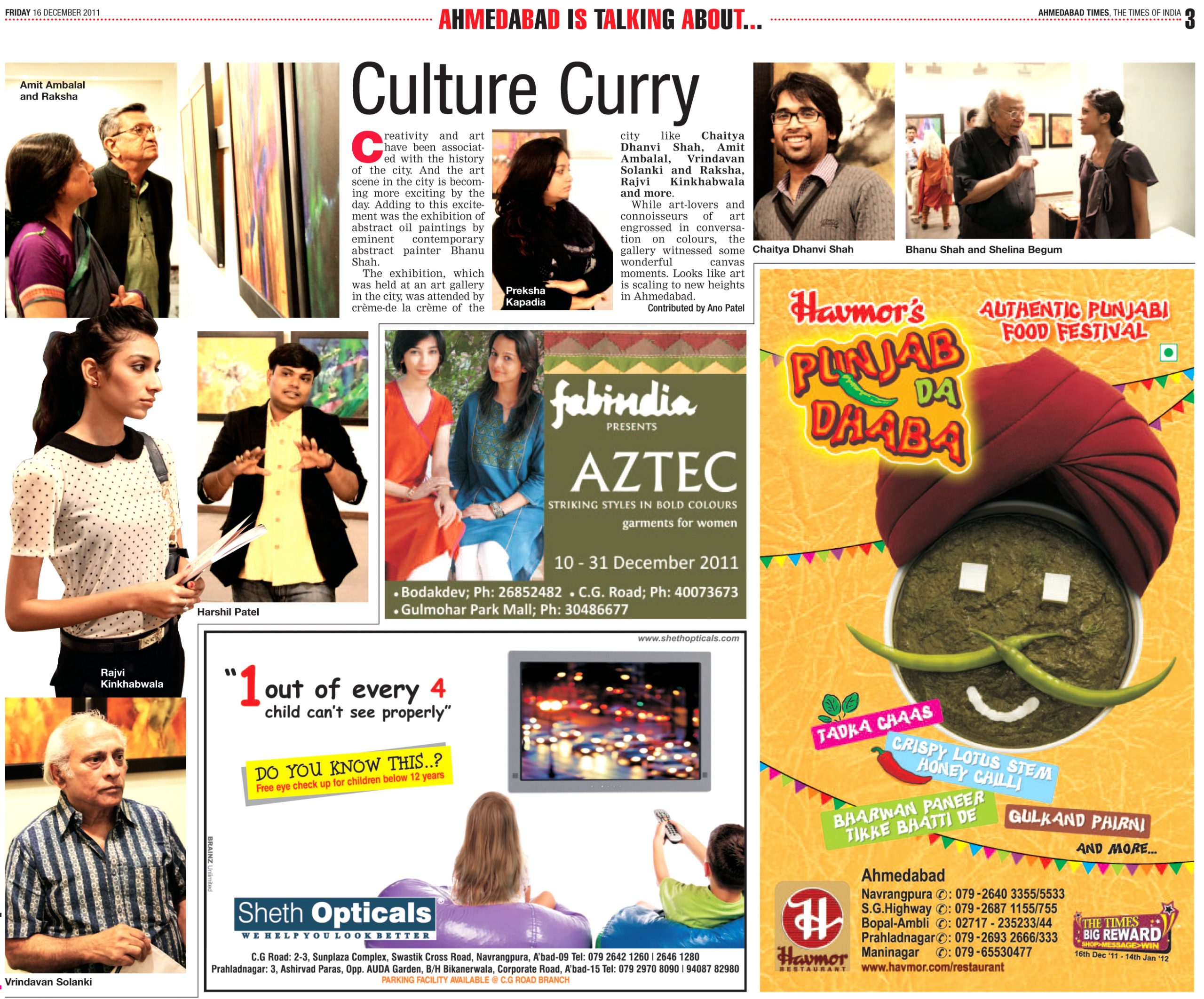
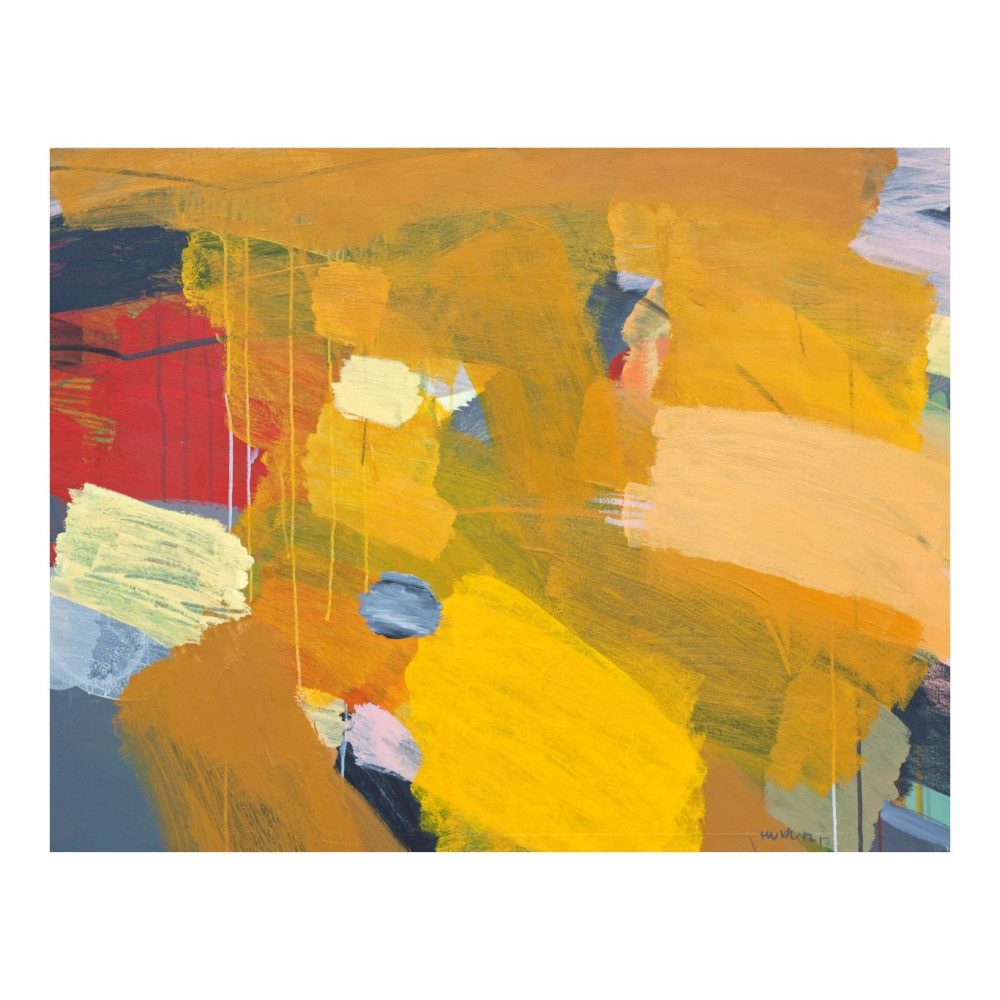
Photos and Text © Chaitya Dhanvi Shah


